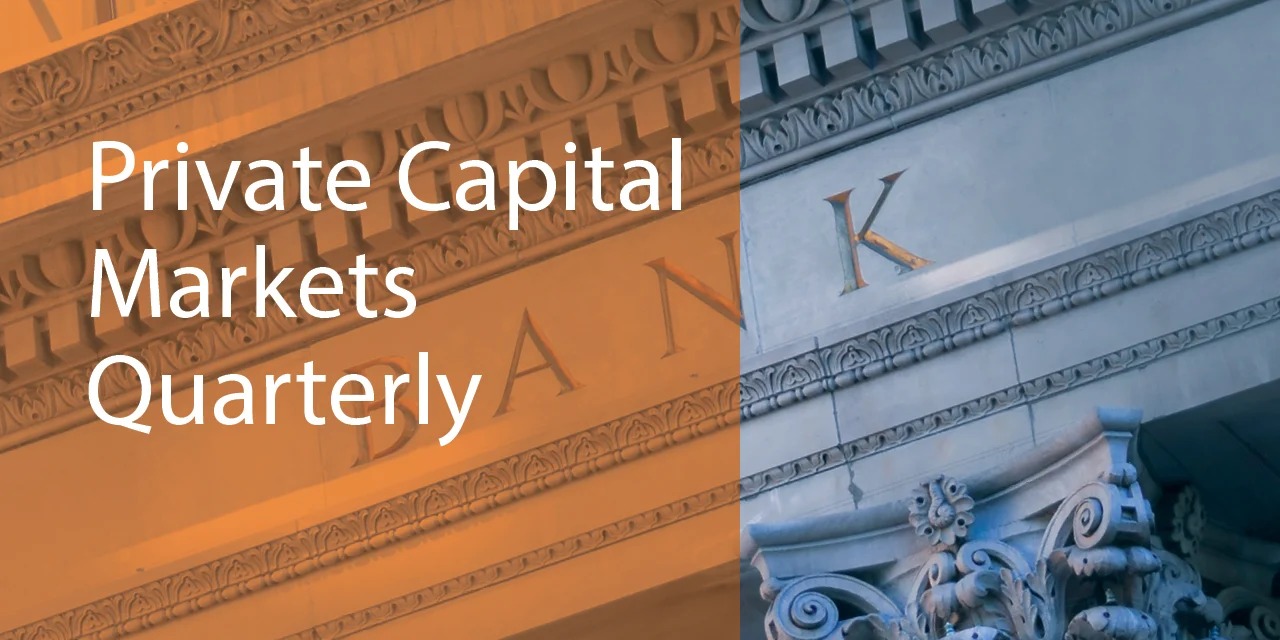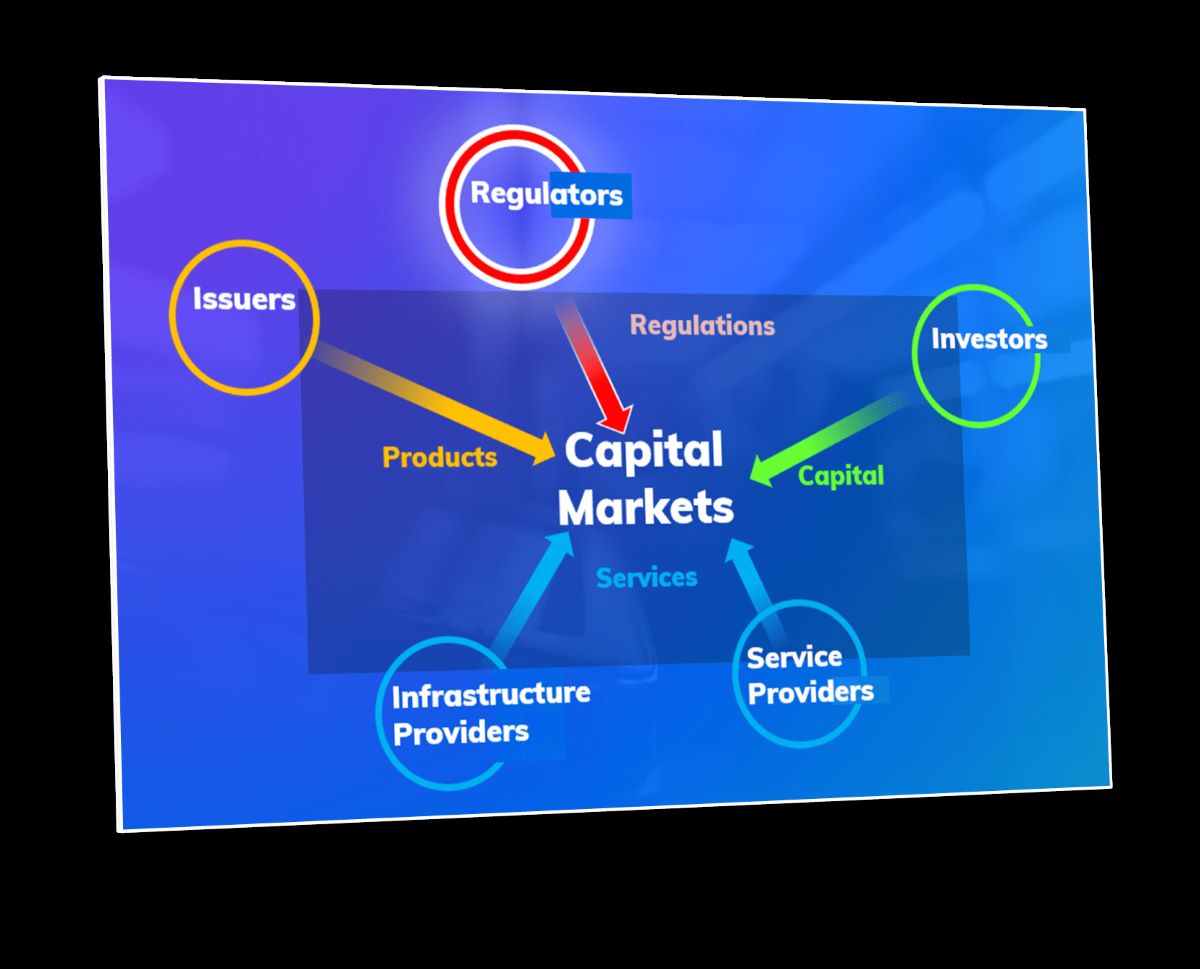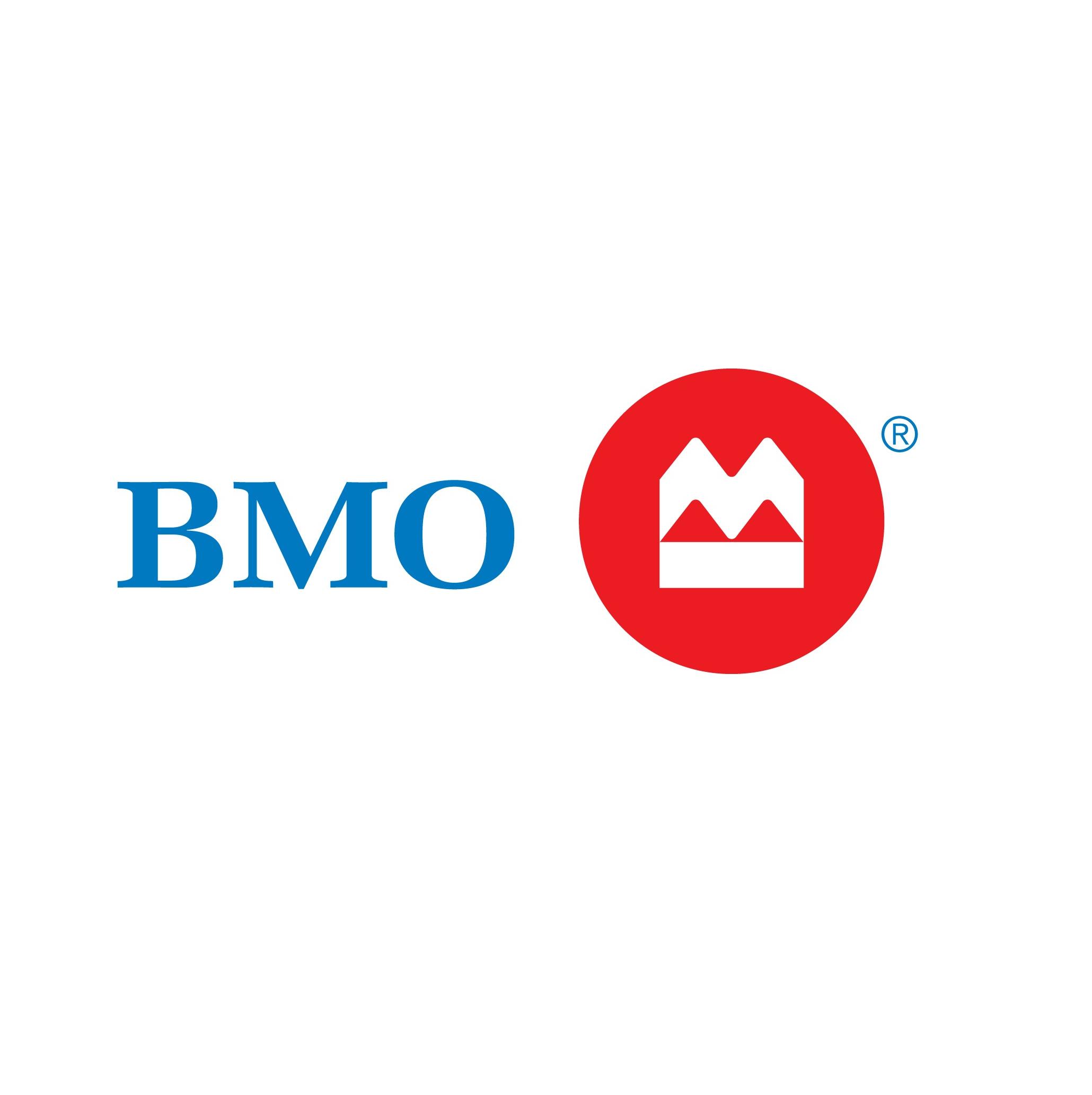

Finance
What Is Equity Capital Markets
Modified: February 21, 2024
Learn about the role of equity capital markets in finance and how they help companies raise funds through the sale of stocks and shares.
(Many of the links in this article redirect to a specific reviewed product. Your purchase of these products through affiliate links helps to generate commission for LiveWell, at no extra cost. Learn more)
Table of Contents
Introduction
Welcome to the world of Equity Capital Markets. In the vast landscape of finance, the Equity Capital Markets (ECM) play a crucial role in facilitating the buying and selling of company shares. Equity capital markets refer to the market where companies raise funds by offering ownership shares to public and institutional investors. This vibrant market serves as a platform for companies to access capital and investors to participate in the growth potential of businesses.
The ECM acts as a bridge between companies seeking capital and investors seeking opportunities. It plays a pivotal role in the global financial system, enabling companies to raise capital for various purposes such as expansion, acquisitions, research and development, debt reduction, and working capital. At the same time, it provides investors with opportunities to invest and grow their wealth by purchasing shares in companies with promising prospects.
The Equity Capital Markets encompass both the primary and secondary markets. In the primary market, companies issue new shares to raise capital through methods such as Initial Public Offerings (IPOs) and follow-on offerings. The secondary market, on the other hand, involves the trading of existing shares between investors on stock exchanges.
As we delve deeper into the world of Equity Capital Markets, we will explore the various methods used by companies to raise equity capital, the roles of different participants in this market, the benefits and risks associated with equity investing, and much more. So, strap in and get ready for an insightful journey through the fascinating world of Equity Capital Markets.
Definition of Equity Capital Markets
The Equity Capital Markets (ECM) refer to the financial market where companies issue and trade equity securities, such as common shares, to raise capital. It serves as a platform for companies to access funding from investors in exchange for ownership stakes in the company. The ECM plays a vital role in facilitating the flow of capital between companies and investors.
In essence, the Equity Capital Markets act as a conduit for companies to raise funds for various purposes, such as financing expansion plans, acquiring assets or other companies, paying off debt, or investing in research and development. It allows companies to tap into the collective investment capabilities of the public and institutional investors, expanding their financial resources beyond traditional borrowing from banks.
Equity capital is classified as “permanent capital” since the funds raised through equity issuances do not have to be repaid to investors. Instead, investors become partial owners of the company and share in its potential profits and losses. This ownership stake grants them certain rights, such as voting rights and the ability to participate in future offerings or take part in corporate decision-making.
The ECM is comprised of two primary markets: the primary market and the secondary market.
The primary market is where companies conduct their initial equity offerings, known as Initial Public Offerings (IPOs), as well as follow-on offerings. IPOs are the first time a company offers its shares to the public, allowing it to transition from being privately owned to becoming a publicly traded company. Follow-on offerings, on the other hand, involve companies issuing additional shares after their IPO to raise more capital.
The secondary market consists of the stock exchanges where already issued shares are traded between investors. Investors can buy and sell shares in the secondary market, providing liquidity to the market and allowing investors to enter or exit their positions at any time based on prevailing market conditions.
In summary, the Equity Capital Markets serve as a crucial platform for companies to raise equity capital and for investors to invest in promising businesses. It enables companies to access funds for growth and allows investors to participate in the success of these companies. In the next sections, we will explore the different methods used by companies to raise equity capital and the key participants in the Equity Capital Markets ecosystem.
Primary Market
The primary market is an essential component of the Equity Capital Markets (ECM). It is where companies issue new shares to raise capital from investors. The primary market plays a crucial role in facilitating Initial Public Offerings (IPOs) and follow-on offerings.
Initial Public Offering (IPO):
An IPO is the process by which a company goes from being privately owned to becoming a publicly traded company. In an IPO, the company offers its shares to the public for the first time, allowing investors to purchase ownership stakes in the company. The primary objective of an IPO is to raise capital to fund the company’s growth, expansion, or other strategic initiatives.
IPOs are typically underwritten by investment banks or brokerage firms, which assist in pricing the shares, marketing the offering to potential investors, and facilitating the sale of shares. The process involves filing prospectuses with regulatory bodies, such as the Securities and Exchange Commission (SEC) in the United States, outlining important information about the company’s financials, business operations, and risks.
Companies often choose to go public through an IPO to access a wider pool of investors, increase visibility and credibility, and provide liquidity to existing shareholders. Going public also enables companies to use their stock as a currency for potential acquisitions or to incentivize employees through stock-based compensation.
Follow-on Offerings:
After an IPO, companies may choose to issue additional shares through follow-on offerings. Follow-on offerings allow companies to raise additional capital from existing shareholders or new investors. The proceeds from follow-on offerings can be used for various purposes, including funding acquisitions, expanding operations, or paying off debt.
Companies typically announce follow-on offerings after the IPO has generated sufficient interest and demand for their shares. These offerings can take several forms, such as rights issues, where existing shareholders are granted the right to purchase additional shares at a discounted price, or public offerings, where new shares are offered to the general public.
Overall, the primary market is a critical avenue for companies to raise equity capital and fuel their growth ambitions. IPOs and follow-on offerings open up exciting investment opportunities for investors looking to participate in the early stages of a company’s growth. In the next section, we will explore the secondary market and its role in the Equity Capital Markets.
Secondary Market
The secondary market is a vital component of the Equity Capital Markets (ECM). It is where previously issued shares are bought and sold between investors. The secondary market provides liquidity and enables investors to trade shares, allowing them to enter and exit positions based on their investment strategies and market conditions.
Stock Exchanges:
The secondary market operates primarily through stock exchanges, which are centralized marketplaces where buyers and sellers come together to trade shares. Some of the well-known stock exchanges include the New York Stock Exchange (NYSE), Nasdaq, London Stock Exchange (LSE), and Tokyo Stock Exchange (TSE).
Stock exchanges provide a transparent and regulated trading environment, ensuring that transactions occur fairly and efficiently. They have established rules and regulations, including listing requirements that companies must meet to have their shares traded on the exchange. These listing requirements often include specific financial criteria, corporate governance standards, and reporting obligations.
Liquidity:
One of the key benefits of the secondary market is the availability of liquidity. It allows investors to buy and sell shares quickly and easily, making their investments more flexible. Investors can sell their shares if they need to raise cash or take advantage of new investment opportunities. Similarly, they can purchase shares of companies they believe will perform well in the future.
Liquidity in the secondary market is facilitated by the presence of market participants such as institutional investors, retail investors, and market makers. These participants provide liquidity by actively buying and selling shares on the exchange, ensuring that there are enough buyers and sellers to match orders and facilitate smooth transactions.
Price Discovery:
The secondary market also plays a crucial role in price discovery. The constant buying and selling of shares on the exchange help determine the fair market value of a company’s stock. Market forces such as supply and demand, investor sentiment, and fundamental analysis contribute to the price movements of shares.
Investors can monitor stock prices in real-time, allowing them to make informed investment decisions. They can analyze historical price trends, study company performance reports, and evaluate market trends to assess the fair value of a particular stock. Price discovery in the secondary market is an essential mechanism for valuing companies and assessing their growth prospects.
Stock Indices:
An integral part of the secondary market is the creation and tracking of stock indices. Stock indices, such as the S&P 500, Dow Jones Industrial Average, or FTSE 100, represent baskets of stocks from different sectors or regions. These indices provide benchmarks for investors to measure the performance of the broader market or specific industry sectors.
The secondary market offers investors the opportunity to participate in the growth of companies, trade shares, and manage their investment portfolios. It provides a mechanism for price discovery and ensures the liquidity necessary for efficient investing. In the next section, we will explore the various methods used by companies to raise equity capital in the Equity Capital Markets.
Initial Public Offering (IPO)
An Initial Public Offering (IPO) is a significant event in the Equity Capital Markets (ECM). It is the process by which a privately owned company offers its shares to the public for the first time, thereby transitioning into a publicly traded company.
Raising Capital:
The primary objective of an IPO is for the company to raise capital from investors. By going public, the company can access a wider pool of potential investors and generate funds to support various business activities. The funds raised through an IPO can be used for purposes such as financing expansion plans, investing in research and development, paying off debt, or acquiring other companies.
Underwriting:
Before an IPO, the company typically engages the services of investment banks or brokerage firms to act as underwriters. The underwriters play a crucial role in managing the offering process. They help price the shares, market the offering to potential investors, and facilitate the sale of shares to the public.
Regulatory Requirements:
When preparing for an IPO, the company must comply with regulatory requirements set by the relevant financial authorities, such as the Securities and Exchange Commission (SEC) in the United States. These requirements include providing comprehensive financial disclosures, business operations information, risk factors, and other pertinent details about the company. These disclosures are typically outlined in a document called a prospectus, which is made available to potential investors.
Market Timing:
Timing is a critical factor in the success of an IPO. Companies aim to go public during favorable market conditions when investor sentiment is positive and market valuations are attractive. The decision to launch an IPO often considers factors such as market volatility, industry trends, and investor appetite for new offerings.
Price Determination:
The price of shares in an IPO is determined through a process called book-building. Investment banks and underwriters solicit indications of interest from institutional and retail investors, gauging the demand and determining the price range for the shares. The final offering price is typically set through a combination of investor feedback, market analysis, and negotiations between the company and its underwriters.
Benefits for Companies:
An IPO offers several benefits to the company going public. It provides access to a significant pool of capital, enabling the company to finance growth initiatives and strategic plans. Going public also enhances the company’s visibility and credibility, potentially attracting more customers, partners, and employees. Additionally, an IPO can serve as an exit strategy for early investors and founders, allowing them to monetize their investments and generate liquidity.
Opportunities for Investors:
Investing in IPOs provides opportunities for investors to participate in the growth potential of companies at an early stage. It allows them to invest in businesses that were previously inaccessible or privately held. Although IPOs can be risky investments, they can also provide significant returns if the company’s performance meets or exceeds expectations.
In summary, an IPO is a significant event in the Equity Capital Markets where a company transitions from being privately held to being publicly traded. It allows companies to raise capital, enhances their visibility, and provides investment opportunities for individuals and institutions. In the following sections, we will explore other methods used for equity capital raising and further delve into the role of Equity Capital Markets.
Follow-on Offerings
Follow-on offerings are a common method used in the Equity Capital Markets (ECM) for companies to raise additional capital after their initial public offering (IPO). These offerings involve the issuance of additional shares by a publicly traded company, allowing them to raise funds for various purposes.
Raising Capital:
The primary objective of a follow-on offering is to raise capital for the company. The additional funds can be used for a range of purposes, including funding expansion plans, acquiring assets or other companies, research and development, debt reduction, or working capital. Follow-on offerings provide companies with an opportunity to tap into the existing investor base or attract new investors interested in the company’s growth potential.
Types of Follow-on Offerings:
Follow-on offerings can take different forms, depending on the specific needs and circumstances of the company. Some common types of follow-on offerings include:
- Public Offerings: In a public offering, additional shares are offered to the general public. This allows companies to expand their shareholder base and attract new investors.
- Rights Issues: Rights issues are offerings made exclusively to existing shareholders, granting them the right to purchase additional shares at a discounted price. This gives current shareholders the opportunity to maintain their proportional ownership in the company.
- Private Placements: Private placements involve the sale of shares to a small group of select investors, such as institutional investors or private equity firms. These offerings are typically conducted outside of the public markets.
Underwriting:
Similar to IPOs, follow-on offerings may involve the participation of underwriters. Underwriters help facilitate the offering process by assisting in pricing the shares, marketing the offering, and managing the sale of shares to investors. The underwriters may also provide underwriting commitments, guaranteeing the purchase of a certain number of shares, ensuring a successful offering.
Benefits for Companies:
Follow-on offerings offer several benefits to companies. They provide a means to access additional capital for growth initiatives without incurring debt. Companies can strengthen their balance sheets, fund strategic plans, or take advantage of market opportunities. Follow-on offerings can also enhance the company’s visibility and reputation among investors.
Opportunities for Investors:
Investors can benefit from participating in follow-on offerings. It allows them to invest in companies they believe in and potentially capitalize on the growth prospects of these companies. Investors who hold existing shares may also have the opportunity to purchase additional shares at a discounted price, increasing their ownership stake at a favorable valuation.
Considerations:
While follow-on offerings can be attractive investment opportunities, it’s important for investors to carefully evaluate the offering and consider various factors. These factors may include the company’s financial position, growth prospects, market conditions, competitive landscape, and the potential dilution of existing shares.
To summarize, follow-on offerings are valuable tools in the Equity Capital Markets for companies to raise additional capital after their IPO. These offerings enable companies to finance growth initiatives and provide investment opportunities for individuals and institutions. In the next section, we will explore other methods used for equity capital raising in the Equity Capital Markets.
Equity Capital Raising Methods
Equity capital raising methods encompass a variety of approaches used by companies to raise funds in the Equity Capital Markets (ECM). Equity capital refers to the funds raised by issuing ownership shares or equity securities to investors. These methods provide companies with the opportunity to access capital in exchange for ownership stakes in the company.
Initial Public Offering (IPO):
An IPO is a primary method used by privately held companies to go public and raise equity capital from the public. In an IPO, the company issues shares to the public for the first time, allowing investors to purchase ownership stakes in the company. The proceeds from the IPO can be used for various purposes, such as financing expansion plans, research and development, or debt reduction.
Follow-on Offerings:
Follow-on offerings, as discussed in the previous section, involve the issuance of additional shares by already publicly traded companies. These offerings allow companies to raise additional capital from existing shareholders or new investors. Follow-on offerings can take different forms, such as public offerings, rights issues, or private placements.
Private Placements:
Private placements involve the sale of shares to a select group of investors, such as institutional investors or private equity firms. Private placements are often conducted outside of the public markets and are subject to specific regulations and requirements. This method allows companies to raise equity capital from sophisticated investors without going through the rigorous process of an IPO.
Convertible Securities:
Convertible securities are hybrid financial instruments that combine attributes of both equity and debt. These securities give investors the option to convert their investment into equity shares at a predetermined conversion price and time. Convertible securities, such as convertible bonds or preferred shares, provide companies with a flexible method of raising capital, allowing investors to participate in future potential upside while providing an element of downside protection.
Venture Capital and Private Equity:
Companies at an early stage of their development often seek equity capital from venture capital (VC) or private equity (PE) firms. VC firms invest in startups or high-growth companies, providing them with funding in exchange for an ownership stake. PE firms, on the other hand, invest in more mature companies and typically aim to acquire a controlling interest. VC and PE investments provide capital and often strategic guidance to help companies grow and succeed.
Crowdfunding:
Crowdfunding has emerged as a popular method for companies, particularly startups, to raise equity capital from a large number of individual investors. Through online crowdfunding platforms, companies can present their investment proposition to retail investors who can contribute varying amounts of capital in exchange for equity shares. Crowdfunding has democratized access to capital, enabling companies to raise funds from a broader investor base.
Direct Listings:
In a direct listing, a company bypasses the traditional IPO process and directly lists its existing shares on a stock exchange. Direct listings allow companies to become publicly traded without issuing new shares, providing existing shareholders with the opportunity to sell their shares to the public. While the company does not raise capital directly through a direct listing, it allows for enhanced liquidity and market exposure.
These equity capital raising methods provide companies with various avenues to raise funds in the Equity Capital Markets. Each method carries its own advantages and considerations, and companies must evaluate their specific needs and circumstances when choosing the appropriate approach. In the next section, we will explore the key participants in the Equity Capital Markets ecosystem.
Role of Equity Capital Markets
The Equity Capital Markets (ECM) play a pivotal role in the global financial system by facilitating the flow of capital between companies and investors. The ECM serves as a platform for companies to raise equity capital and provides investors with opportunities to invest in promising businesses. Let’s explore the key roles that the ECM fulfills:
Capital Formation:
The primary role of the ECM is to facilitate the process of capital formation. Companies leverage the ECM to raise funds by issuing equity securities, such as common shares, to investors. This capital is essential for businesses to finance their operations, fuel growth, pursue strategic initiatives, and invest in research and development. The ECM allows companies to access a wide range of potential investors, from individual retail investors to institutional investors like pension funds and mutual funds.
Marketplace for Investment:
The ECM serves as a marketplace for investors to allocate their capital into various investment opportunities. By investing in equity securities, investors have the potential to participate in the growth and success of companies. The ECM provides a diverse range of investment options, allowing investors to diversify their portfolios and potentially generate favorable returns. It enables investors to deploy their capital into promising companies across different sectors and geographies.
Liquidity:
One of the crucial roles of the ECM is providing liquidity to shareholders. Once a company has gone public and its shares are traded on stock exchanges in the secondary market, investors have the ability to buy or sell their shares at any time. This liquidity enhances the attractiveness of equity investments by providing investors with flexibility to enter or exit their positions as needed. The secondary market, facilitated by the ECM, ensures that shares can be bought and sold promptly, allowing investors to access their invested capital quickly if desired.
Price Discovery:
The ECM plays a significant role in price discovery. The continuous trading of shares on stock exchanges enables the market to determine the fair value of a company’s stock based on investor demand and supply. The interaction of buyers and sellers in the ECM sets market prices, reflecting investors’ perceptions of a company’s financial performance, growth prospects, and overall market conditions. Price discovery is critical for investors to make informed decisions and for companies to be fairly valued in the market.
Access to Capital:
Equity capital markets provide companies, especially small and medium-sized enterprises (SMEs), with access to much-needed capital. By going public or conducting other equity-based fundraising activities, companies can tap into a broader pool of potential investors beyond traditional bank lending. This enables companies to diversify their sources of capital, reduce dependence on debt financing, and pursue growth opportunities that may have been otherwise unattainable.
Overall, the ECM serves as a vital link between companies seeking capital and investors seeking investment opportunities. It facilitates capital formation, provides liquidity and price discovery, and offers access to a diverse marketplace of investment options. The ECM plays a crucial role in supporting economic growth and allowing businesses to thrive. In the next section, we will explore the key participants that make up the ECM ecosystem.
Key Participants in Equity Capital Markets
The Equity Capital Markets (ECM) ecosystem consists of a diverse group of participants who play crucial roles in facilitating the process of capital raising and investment. Let’s explore the key participants that contribute to the functioning of the ECM:
Companies:
Companies are at the core of the ECM as the issuers of equity securities. They utilize the ECM to raise capital by offering ownership shares to investors. Companies seeking equity capital can range from small, privately-held startups to large, publicly-traded corporations. They engage in activities such as Initial Public Offerings (IPOs), follow-on offerings, and other equity capital raising methods to finance their growth, acquisitions, or other strategic initiatives.
Investors:
Investors are key participants in the ECM, providing the capital that companies require. They include both institutional investors, such as pension funds, mutual funds, and insurance companies, as well as individual retail investors. Investors carefully evaluate companies and their financials, growth prospects, and overall market conditions before making investment decisions. They invest in equity securities with the aim of generating returns through capital appreciation and dividend payments. Investors range from long-term holders seeking stable investments to short-term traders looking to take advantage of market fluctuations.
Underwriters:
Underwriters play a crucial role in helping companies navigate the capital raising process in the ECM. These entities, usually investment banks or brokerage firms, assist companies in determining the optimal pricing and structure for their offerings. Underwriters also help market the offering to potential investors, ensure compliance with regulatory requirements, and facilitate the sale of shares. They may provide underwriting commitments to purchase a certain number of shares, reducing the risk for companies and offering additional confidence to investors.
Stock Exchanges:
Stock exchanges serve as the marketplace where companies list their shares for trading, providing liquidity to investors. Exchanges, such as the New York Stock Exchange (NYSE), Nasdaq, London Stock Exchange (LSE), and others, offer a regulated platform where shares can be bought and sold. These exchanges ensure fair and transparent trading through established rules, listing requirements, and regulatory oversight. They facilitate price discovery and enable investors to access a wide range of investment opportunities.
Regulatory Bodies:
Regulatory bodies play a crucial role in overseeing and regulating the ECM. They set guidelines and rules to ensure fair and efficient market operations, protect investor interests, and maintain market integrity. Regulatory bodies, such as the Securities and Exchange Commission (SEC) in the United States, Securities and Exchange Board of India (SEBI), Financial Conduct Authority (FCA) in the UK, and others, enforce compliance with disclosure requirements, corporate governance standards, and anti-fraud measures.
Financial Advisors and Consultants:
Financial advisors and consultants provide expertise and guidance to companies and investors in navigating the ECM. These professionals, including investment bankers, financial analysts, lawyers, and accountants, assist companies in structuring and executing capital raising activities. They provide valuation analysis, due diligence, legal documentation, and regulatory compliance assistance, ensuring that transactions are conducted in accordance with applicable laws and regulations. Financial advisors also provide investment advice to investors, helping them make informed decisions in the dynamic ECM landscape.
Each of these participants plays a critical role in facilitating the flow of capital, ensuring market transparency, and upholding the integrity of the ECM. Through their collective efforts, companies can access the capital needed for growth, and investors can participate in the growth potential of businesses. In the following section, we will explore the benefits and risks associated with participating in the Equity Capital Markets.
Benefits and Risks of Equity Capital Markets
The Equity Capital Markets (ECM) offer a range of benefits and risks for companies and investors alike. Understanding these factors is essential for making informed decisions and managing expectations. Let’s explore the benefits and risks associated with participating in the ECM:
Benefits:
Capital Access: The ECM provides companies with access to a substantial pool of capital. By issuing equity securities, companies can raise funds to finance growth initiatives, research and development, acquisitions, or debt reduction. This access to capital allows companies to pursue strategic opportunities that may have been otherwise unattainable.
Liquidity: The secondary market in the ECM offers liquidity to investors. Once a company has gone public, investors can buy and sell their shares on stock exchanges at any time. This liquidity provides flexibility for investors to enter or exit their positions based on changing market conditions or investment strategies.
Portfolio Diversification: Investing in equity securities enables investors to diversify their investment portfolios. By allocating capital across different companies, sectors, and geographies, investors can reduce their exposure to specific risks and potentially enhance their overall portfolio returns.
Potential Returns: Equity investments have the potential to generate significant returns over the long term. Investing in companies with promising growth prospects can lead to capital appreciation, as the value of the shares increases over time. Investors may also receive dividends, which represent a portion of the company’s profits distributed to shareholders.
Ownership Stake: Equity investments provide investors with ownership stakes in the companies they invest in. This ownership grants them certain rights and privileges, such as voting rights, participation in shareholder meetings, and the ability to benefit from a company’s success through capital appreciation and potential dividend payments.
Risks:
Market Volatility: The ECM is subject to market volatility, meaning share prices can fluctuate rapidly due to various factors such as economic conditions, industry trends, geopolitical events, or changes in investor sentiment. These price fluctuations can result in gains or losses for investors, and it’s important to be prepared for potential market volatility.
Company-Specific Risks: Investing in individual companies carries company-specific risks. Factors such as poor financial performance, management issues, legal or regulatory challenges, or changes in competitive landscapes may negatively impact a company’s share price and investor returns. Thorough due diligence and research are essential to mitigate such risks.
Market and Liquidity Risks: The liquidity of shares in the secondary market can vary based on market conditions. During periods of low market liquidity, it may be more challenging for investors to buy or sell shares at desired prices. Additionally, market inefficiencies or disruptions can impact the efficiency of the ECM and potentially affect investor returns.
Dilution: Companies may issue additional shares through follow-on offerings, which can result in dilution for existing shareholders. When new shares are issued, the ownership stake of existing shareholders becomes a smaller proportion of the total shares outstanding. This dilution can impact the value of existing shares and the voting rights of shareholders.
Regulatory and Legal Risks: The ECM is heavily regulated to protect investors and maintain market integrity. Compliance with regulatory requirements, such as financial reporting, disclosure obligations, and corporate governance standards, is essential. Companies and investors must navigate these regulations to ensure compliance and mitigate legal risks.
Understanding the benefits and risks associated with investing or raising capital in the ECM is crucial for making informed decisions. By thoroughly evaluating opportunities and considering one’s risk tolerance and investment objectives, participants can navigate the ECM effectively. In the concluding section, we will summarize the key points discussed and the importance of the ECM in the world of finance.
Conclusion
The Equity Capital Markets (ECM) serve as a dynamic and vital component of the global financial system. They provide a platform for companies to raise equity capital and for investors to participate in the growth and success of businesses. Throughout this article, we have explored the various aspects of the ECM, including the definition of equity capital markets, the primary and secondary markets, initial public offerings (IPOs), follow-on offerings, equity capital raising methods, the role of the ECM, key participants, and the benefits and risks involved.
The ECM plays a significant role in capital formation, allowing companies to access funds to fuel their growth, pursue strategic initiatives, and innovate. It provides investors with opportunities to invest in promising companies, diversify their portfolios, and potentially generate favorable returns. The liquidity and price discovery mechanisms of the ECM enable investors to buy and sell shares and determine the fair value of companies in the market.
The key participants in the ECM, including companies, investors, underwriters, stock exchanges, regulatory bodies, and financial advisors, all contribute to the efficient functioning of the market. Each participant plays a distinct role in facilitating the flow of capital and ensuring market transparency, integrity, and compliance.
While participating in the ECM offers numerous benefits, it is essential to be aware of the risks involved. Market volatility, company-specific risks, liquidity risks, dilution, and regulatory and legal risks are some of the factors that investors and companies must carefully evaluate and manage to navigate the ECM successfully.
In conclusion, the Equity Capital Markets are an essential part of the global finance ecosystem, connecting companies and investors in the pursuit of capital formation and investment opportunities. The ECM supports economic growth, innovation, and wealth creation, while also requiring participants to assess risks and make informed decisions. By understanding the dynamics of the ECM and leveraging the expertise of financial professionals, companies and investors can optimize their engagement in this dynamic marketplace.














